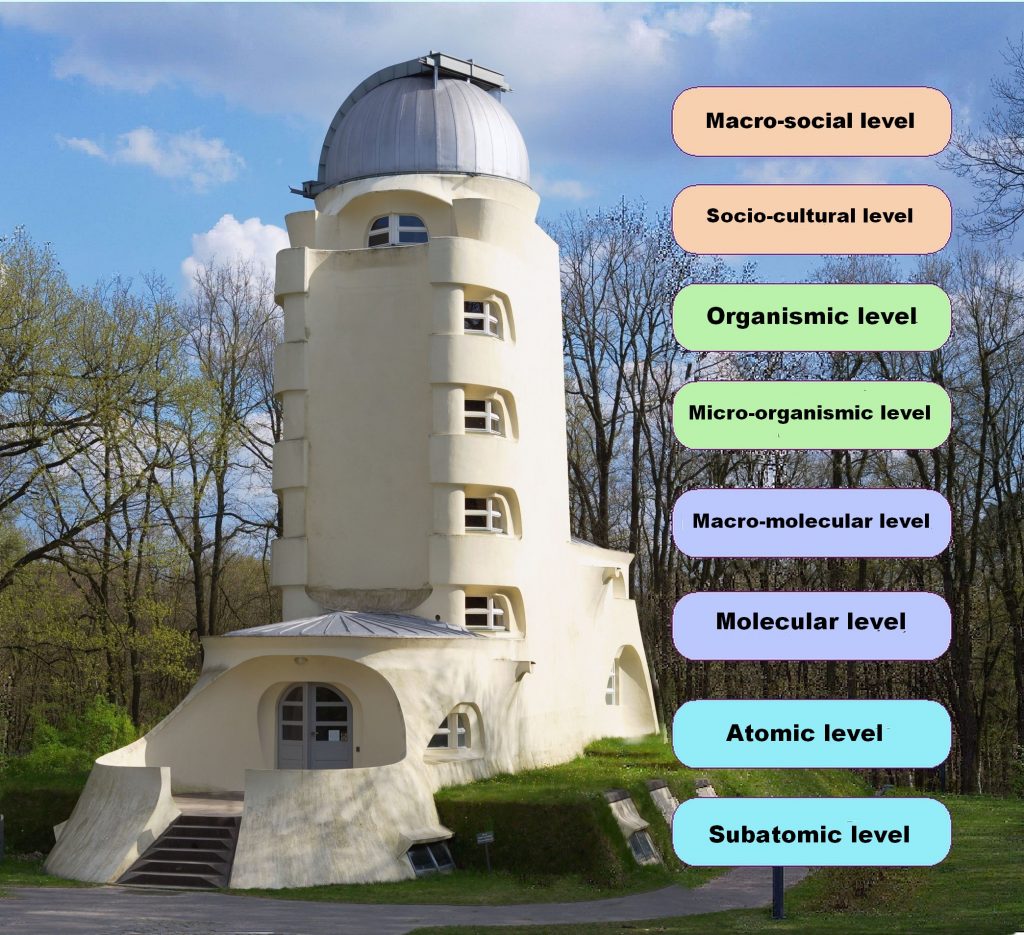Welcome to the site of Hans-Dieter Herrmann, physicist, Dr. rer. nat.
A Theory Of Natural Systems and their Analogies (TONSA)
Link to The Dual Space Concept
A joint model of particles and space-time:
https://philarchive.org/rec/HERAJM-2

Einsteinturm, Wikimedia commons,
Originaldatei: https://commons.wikimedia.org/wiki/File:Einsteinturm_7443.jpg
Lizenz CC0 1.0, URL: „CC0 1.0 Verzicht auf das Copyright“
Natural Systems and State Spaces
Link to Philarchive https://philarchive.org/archive/HERACQ
A schema is proposed assuming eight levels of reality, characterized by natural systems and the state spaces generated by the systems. Six of eight levels in this schema serve as sources of analogies, two levels are the targets of analogical reasoning. The source domains are the atomic, molecular, macromolecular, micro-organismic, organismic and socio-cultural systems and processes.
One of the target domains discussed in the article is the level of subatomic particles. The other target domain, not discussed in the article, could be the level of future supra-national systems. A dual-space picture of natural systems can be defined, such that each system exists as point – like entity (‘compound’) in a ‘common space’ and at the same time as composite entity (composite of ‘units’) in an individual ‘eigenspace’. The common space is populated by other systems of the same level, whereas the individual eigenspace contains only the parts (units) of a single system (compound).
The development of natural systems within a certain level and the emergence of a new, higher level represent two directions of evolution. A general term of the evolution is developed and the laws of system development are formulated as text and in symbolic form.
At the subatomic level, spacetime is identified as part of the state space of the subatomic particles. Spacetime is complemented by an eigenspace of subatomic particles, fixed to the structure of each individual particle. A „basic space“ is proposed as the sum of all eigenspaces of particles. Subatomic particles exist simultaneously in space-time and in the circular basic space. Masses and charges circulate in basic space force-free and generate „intrinsic“ properties such as the spin and magnetic moment of particles.
Analogical reasoning is used to obtain conclusions on a target level using generalizations of statements on the source levels. Logical operators and quantifiers are used for formalization.
A conjecture about the existence of hypothetical matter that is not detectable in space-time is derived. Such forms of matter could exist exclusively in the basic space and represent dark matter and dark energy.